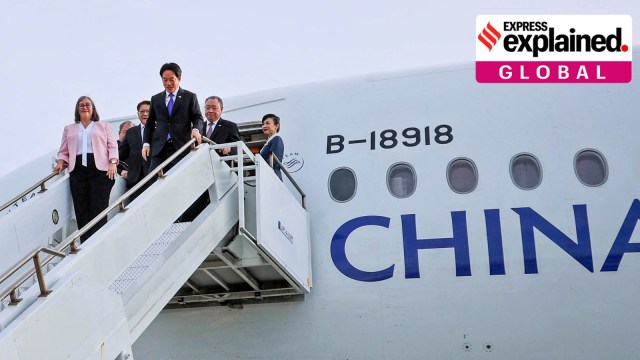
Competing claims of China and Taiwan
China has long been critical of high-level official exchanges between the US and Taiwan given its territorial claims over Taiwan. Since the inception of China’s modern communist state in 1949, it has laid historical claims over the island. In turn, Taiwan also claimed to be the sole representative of China. Amid prevalent Cold War rivalries, the US supported Taiwan and officially recognised it.
However, with the end of the Cold War in 1991 and China’s increasing global heft after its economic liberalisation in 1978, more countries began establishing diplomatic relations with mainland China. Its government also mandated the One-China principle, which meant that any country hoping to form diplomatic ties could not recognise Taiwanese independence.
Today, only 12 nations recognise Taiwan as an independent country. Most other countries, such as India, the US, Japan, etc., only have unofficial ties with it since they recognise mainland China. As a result, when the US recognised China and established diplomatic ties with it in 1979, it had to downgrade its relationship with Taiwan.
Underlying conditions for US-Taiwan relationship
In three joint communiqués concluded with the Chinese government in 1972, 1978, and 1982, the United States “acknowledged,” but did not endorse, the “Chinese” position that “there is but one China and Taiwan is part of China.” It also said it would “maintain cultural, commercial, and other unofficial relations with the people of Taiwan”.
It was only in 1994 that the first Taiwanese president went to the US for a “transit”, essentially having the visit serve as a stopover to travel elsewhere. According to a US Congressional Research Service report, the Bill Clinton administration allowed Taiwan’s then-President Lee Teng-hui “to stop to refuel his plane in Hawaii on his way to Central America, but not to spend the night. Apparently piqued, Lee declined to leave his plane. Some Members of Congress saw the Administration’s treatment of Lee as insufficiently respectful.”
Story continues below this ad
De-classified official documents later showed the Clinton administration said it would “[p]ermit normal transits of the U.S., but no visits or public activities, for Taiwan’s top leadership,” while continuing to “[f]orbid visits, as opposed to transits…” Congress also passed the Immigration and Nationality Technical Corrections Act in 1994. Section 221 makes visas available to Taiwan officials “under specified circumstances”.
The only time a “visit” has been undertaken was in 1995, when President Lee sought to make a private visit to his alma mater, Cornell University. While the Clinton Administration initially denied the request and assured China of its decision, Lee ultimately visited Cornell in June 1995. In response, China “carried out missile launches, live-fire exercises, a naval exercise, and an amphibious landing exercise over several months in 1995,” the report says. The ensuing period of military tensions was termed the Third Taiwan Strait Crisis.
Recent criticisms from China
Criticisms over Lai’s visit also arise from his party’s more pro-independence stance. The Democratic Progressive Party has been in power since 2016 and is termed “separatist” by the communist government in China. Former Taiwan President Tsai Ing-wen, Lai’s predecessor, made seven overseas trips with transit stops in the US between 2016 and 2024. One trip in 2023, where she met House Speaker Kevin McCarthy and other members, drew China’s condemnations. The Taiwan Work Office of the Chinese Communist Party accused her party of “clinging to U.S. support to seek independence.”
China also conducted large-scale joint military exercises around Taiwan for three days. A White House official then observed that transit visits by Taiwan presidents are “not uncommon” and said there was “no reason for any overreaction here.”
Story continues below this ad
Lai’s transit began a day after the US approved the potential sale of spare parts for F-16 jets and radars to Taiwan for around $385 million. After the transit, he is scheduled to visit Marshall Islands, Tuvalu and Palau (located in Oceania), which are among the few countries still officially recognising Taiwan.








































